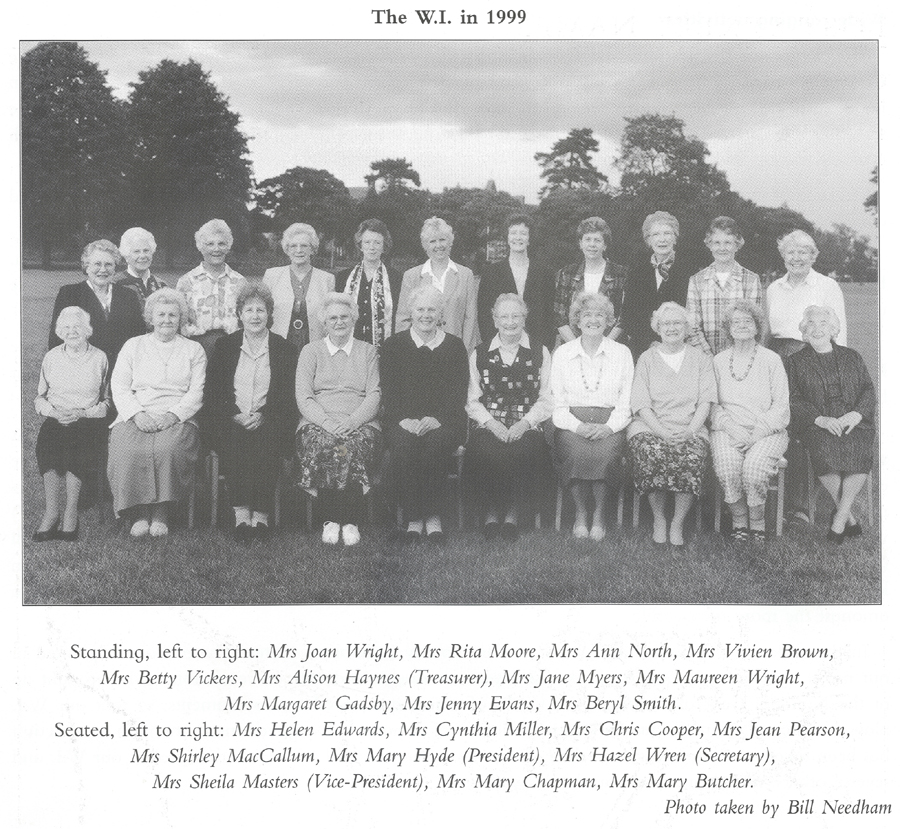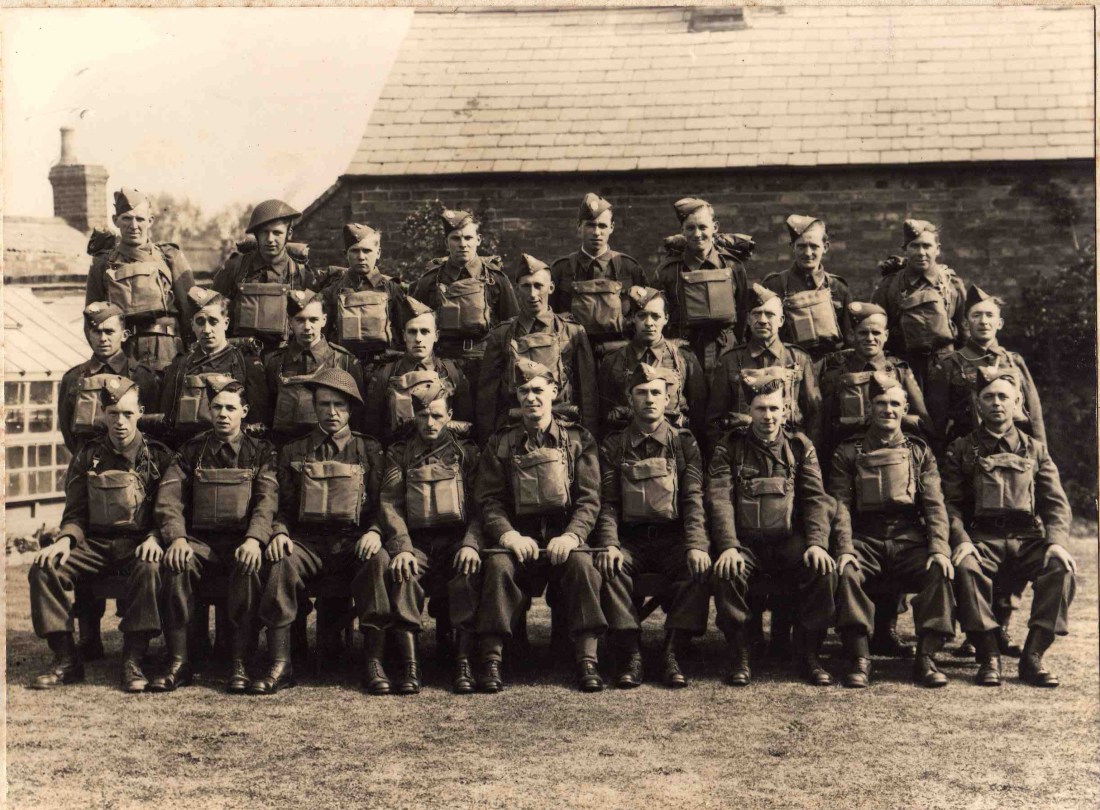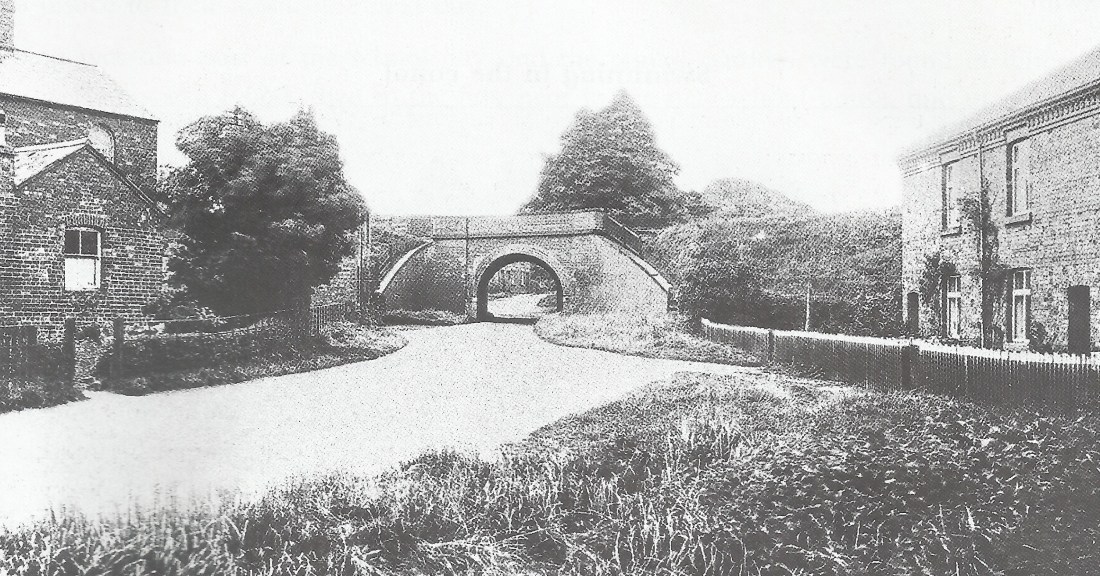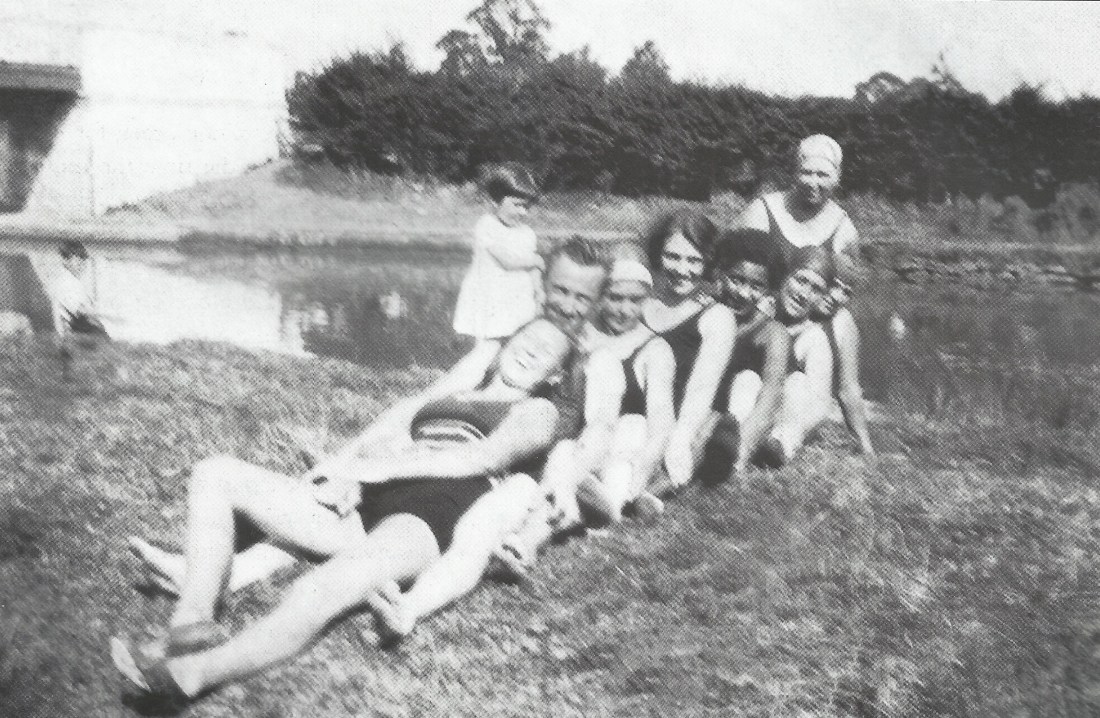The Brownings are a notorious Heyford family — notorious, that is, for their longevity! The last generation of Brownings to bear the family name in the village all died in their late nineties and early one-hundreds. The very last, Bob Browning, died aged 104 in 1997.
The Browning story begins in Maxey, near Peterborough with David Browning, a labourer, who was born some time in the late 1790s. He married a woman called Maria and it may have been she who provided the longevity gene. Maria was born in 1798 and died in 1881, in Daventry, at the age of 83 – only a year before her own son and daughter-in-law.
Police inspector
Maria’s son, also called David was born in 1832 in Maxey and he brought the Browning family to Northamptonshire. He married Susan Price, the daughter of a butcher in 1861 and a year later went into the police force. He became the Police Inspector at Daventry and lived at the County Police Station there. The couple had nine children over thirteen years – the last three were all born within a year of the previous birth. While this is an eye—watering thought, of course it was not unusual to have so many children so close together. More remarkable, perhaps, was that seven children survived into adulthood.
Their parents, David and Susan, were not so lucky with their own life expectancy. Both died in 1882; David aged 50 and his wife, only 41. It appears that an unfortunate incident affected David’s police career and ultimately his life.
Hilda Collins, David Browning’s great grand-daughter, said that when the police inspector turned out gypsies at Dodford village as part of his duty he was attacked and, as the family recalled, “was never the same since.” He did not work again and was retired early from the force.
In the October Court Session of 1878 it is recorded: “That Inspector David Browning be superannuated for 12 months, he has been in the force since 1862 and reported by two Medical Gentlemen as unfit to perform further duty. And it is further ordered as the Chief Constable recommends Inspector Browning for a pension that he do receive for the next 12 months an allowance after the rate of £48 per annum, the allowance to be paid quarterly; at the expiration of the 12 months Inspector Browning be then incapable of performing duty the Court will have to consider the continuation of the Allowance as a yearly Pension.”
One year later the October Session recorded that Inspector David Browning was “incapable of further duty” and was permanently retired. The pension would have been helpful but the family needed to find another income. The Brownings moved to Sheaf Street in Daventry and Susan Browning became a grocer. The census of 1881 shows Susan Browning to be the head of the family, (although David was still alive at the time) with five of her children at home. The elderly Maria Browning, Susan’s mother-in-law – who had been living with the family for at least ten years – had died just before the census was taken.
William Price Browning
Susan and David died shortly after the census, in 1882, and it was left to William Price Browning, as the eldest son, to take care of his younger brothers and sisters. He was 18 and was a commercial traveller and later, a rate collector in Nether Heyford. There must have been some financial difficulty in keeping the family together because Leonard Browning, the youngest child, was sent to Wolverhampton Orphanage at the age of six. Hilda Collins has a Bible inscribed by the orphanage and presented to Leonard. She is not sure why Wolverhampton was chosen but thinks that it might have been a connection with the police force.
Several of the Browning siblings moved to Heyford with William Price Browning (“W.P.”) including one of his younger brothers, David. He was the second son to be called David, the first having died in infancy. David Browning married into the Eales family, who ran the post office, and he kept the shop and post office from 1930 to 1955.
William Price Browning in 1923

Photo lent by Hilda Collins (nee Smith)
The Hardly Annuals
W.P. Browning married Violet, a teacher. They lived in a small cottage near the top of Church Street and had six children within seven years! For this reason, their father referred to them as ‘hardy annuals’ little realising how hardy they would actually be. Violet – without the Browning streak of endurance – died aged 49, but all six children lived on into their late nineties or one—hundreds.
Gwendoline, the eldest child, was born in Nether Heyford in 1891 and followed her mother into the teaching profession, becoming a pupil teacher at Weedon School. In an interview for The Prattler in 1977, 86 year old Gwen remembered how “I did some self—tuition by taking a correspondence course and then later on cycled to teachers’ classes in Daventry.”
She recalled that as a child, “We’d go up to the canal at Heyford Bridge and then all the boys would change one side and the girls the other. Then we’d have a swim or watch the boats, all drawn by horses of course, being pulled up the canal.”
As a young woman, Gwen had an illegitimate daughter, Dorothy. She then married Mr Fred George and had two sons, although the eldest Philip died at 13. She could remember the village midwife, Anne Clarke: “It was quite an occasion when she brought her thousandth baby into the world.”
Like many in the Browning family, Gwen was a Baptist and actively involved in chapel life. She later claimed that her secret to a long life was “to never think about age. Forget how old you are, go wherever you’re asked and never turn down invitations.”
The eldest son, Robert (Bob) was born in 1892 and died in 1997 aged 104. He was the oldest surviving sibling. Like the other Browning children, he attended Bliss Charity School under the headmaster, Mr Cook who he remembered as a stern man. One of his earliest memories was in 1900 when a policeman from Bugbrooke cycled to Heyford to post up the call notices for the Boer War.
In 1905 at the age of 13 he left school and went to work for W H Smith in Weedon, delivering newspapers to the surrounding villages. He would walk with the post to places as far as Grimscote. Later, he joined a boot making factory in Northampton to which he cycled each day. He could always recall the terrible stench of the tanneries as he approached the outskirts of the town.
On the outbreak of World War One, Bob Browning was declared unfit to fight but contributed to the war effort by working a modern boot making machine. He married a woman called Mabel and in 1922 he moved into Northampton. However he retained an active interest in his home village and contributed occasional articles to The Prattler.
May Browning, born 1893 married Harold Smith whose family lived by the canal, beside the Bricklayers Arms before it closed. Harold’s father, Charles, was a railway signalman at Heyford South and the signal box was located on the Litchborough Road near Bugbrooke until the early 1930s.
Hilda Collins remembers how her mother, May, took the post up to Upper Heyford. A family there had a piano and May asked for no charge for her errand but just the opportunity to play it.
Winifred Browning, born 1895, married a Trinidadian, Mr Punch, which was probably considered unusual in 1920s rural England. They had two children but marriage did not survive and at the end of the 1930s, Win Punch earned her income running the fish and chip shop in the barn near The Olde Sun, taking it over from George Oliver.
Nell Browning was born in 1896 and married George Bennett with whom she had a son, Bill. The youngest sibling, Fred, was born in 1898 and lived to be 98. He was an active member of the village community and involved in the parish church — particularly bell ringing. He married a woman called Gladys and lived in Furnace Lane.
Despite the size and longevity of the family, the Browning name did not survive this generation. Of nine children born to the siblings, eight were born to the sisters under their married names and the other was a girl who also married. However, the Browning stock continues in the village through the Collins family, with its most recent name change, by marriage, to Willgress.
The six Browning children as they appeared around 1906

Left to right: May, Fred, Robert, Gwen, Nell, and Win
The family on the occasion of Bob’s 90th Birthday celebration
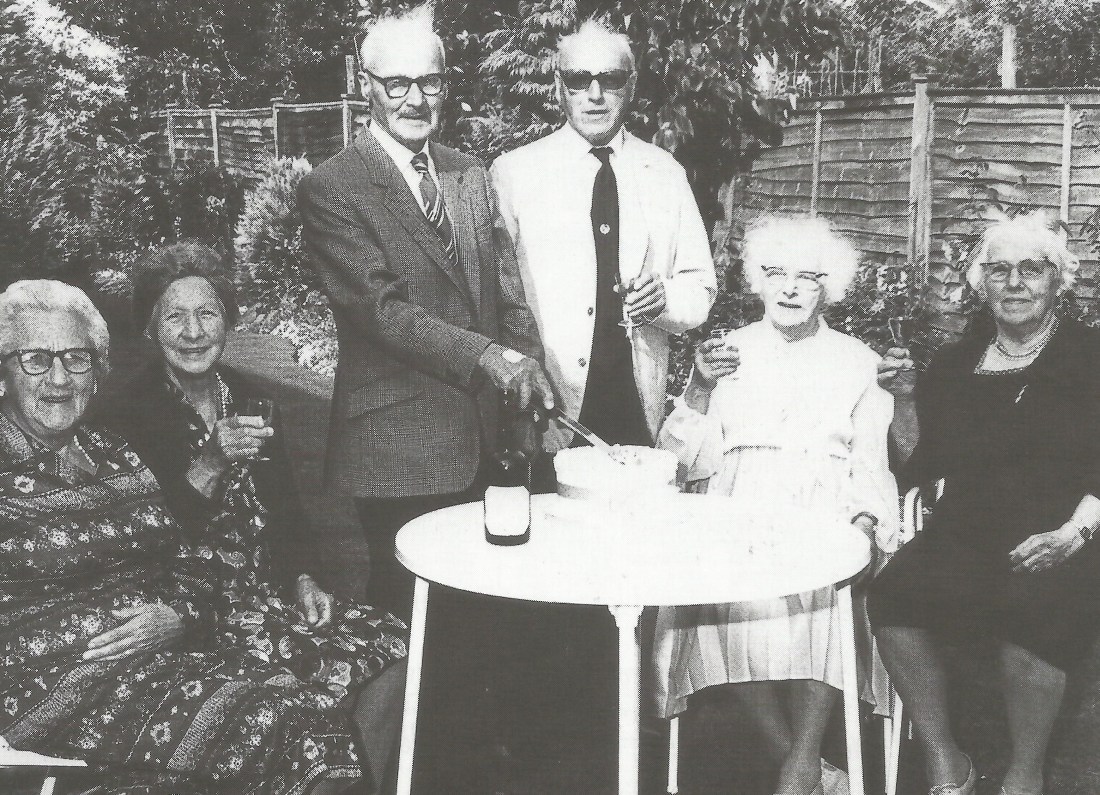
Left to right: Mrs Winifred Punch (87), Mrs Gwendoline George (91), Bob Browning (90),
Fred Browning (84), Mrs May Smith (88), and Mrs Nell Bennett (86)
Photos from an article in the Chronicle and Echo August 1982
W.P Browning’s family on the occasion of his daughter’s wedding in 1921
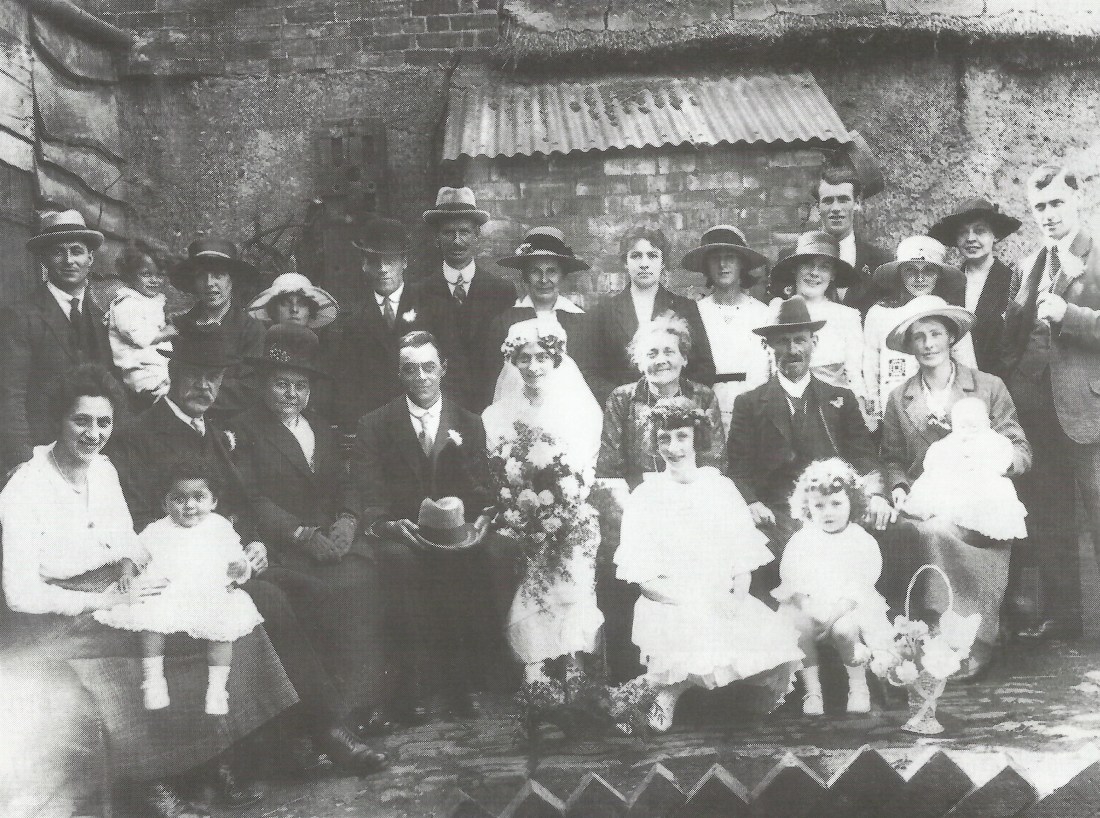
Top: George Bennett, Bill Bennett, Nell Bennett (nee Browning), Gladys Browning, Fred Browning, Friend, Friend, Mabel Browning, Friend, Friend, Fred George, Friend, Friend, Bob Browning
Middle: Win Punch (nee Browning), Odette Punch, Charles Smith, Harriet Smith, Harold Smith (bridegroom), May Smith (bride), Violet Browning, W.P. Browning, Gwen George (nee Browning), Philip Browning
Bottom: Dorothy Browning, Ellen ‘Nen’ Browning
Photo lent by Hilda Collins (nee Smith)
‘Progress’ by Bob Browning (1892-1997)
These days it seems there’s such a fuss about which foods are good for us.
What’s worse, I notice with dismay, the list grows longer every day!
They’re all the things that I miss most: Yorkshire puddings, Sunday roast,
Mash and bangers, eggs and ham, warm scones and strawberry jam,
Toast with butter, thickly spread, beef dripping on fresh-baked bread
Cheese and chicken are suspect too. I really don’t know what to do!’
Obediently when I was small, what Mother served, I ate all,
It seems to me now I am old, I still must do what I am told.
I’m over four score years and ten, and won’t see ninety—five again.
Since everything I ate was wrong, I marvel that I lived so long!
The words of Bob Browning whilst in Bethany Homestead where he spent his later years.
The Post Office
Other Brownings contributed to life in Nether Heyford. As mentioned, David Browning, brother to W.P., married into the village’s post office family. His wife, Annie, Was a member of the Eales family who had run the business since 1877.
John Eales was the village’s first postmaster and ran the post office and shop for 30 years before handing it on to his daughter Amy. She took over in 1907, When the shop and houses on the site were auctioned at The Old Sun Inn and bought by Amy Eales for £320.
David and Annie Browning then took over in 1930 during which time the thatched premises was pulled down and replaced by the present corner—shop building, They had a daughter, Ellen (‘Nen’) who was born in Manor Cottage, Church Street in 1907. Nen taught in the village school before succeeding the shop and post office from her father in 1955.
David Browning outside the post office in the 1950s.

Photo lent by Judy Armitage
Nen Blaney
Nen ran the business until 1968 When, on the death of her husband, Major W. Blaney, Nen sold the shop to a Mr and Mrs Eales (apparently no relation) and opened the newsagent and post office next door. She continued working until 1986 — retiring gracefully at the age of 80!
Nen Blaney had many memories of Heyford. Her uncle, Mr J. Earl, ran a carrier’s cart to Northampton on Wednesdays and Saturdays. She recalled that “the first bus we had in the village was a coal cart that travelled once a day and was run by a Mr Harold Botterill from Bugbrooke. On Saturdays it was a bit different because they put a shed thing (a wooden structure) on top as a cover.”
Mrs Blaney outside her post office

Photo lent by Judy Armitage
She also remembered a postman named Albert Bates Who used to cycle in from Weedon with the post, hand over Nether Heyford’s share and then cycle on to Bugbrooke. Nen Blaney’s own working day was long; starting at 5am and often finishing around midnight. Despite this demanding schedule, Nen Blaney was chairwoman of the British Legion Women’s Section for over 20 years.
She was proud to be invited to the Queen’s Birthday Party at Buckingham Palace in 1971 in celebration of the Legion’s 50th anniversary. Major Blaney chaired the British Legion’s Northamptonshire Branch and served Nether Heyford on the Daventry Rural District Council, of which he became chairman. Family of Nen Blaney still live in the village today.
Sarah Croutear
~~
Extract from “The Story of Heyford” – Local book series published in the late 1990’s
Volume 2 of 4 | Chapter 11 of 11 | Pages 26 to 32

Heyford’s Historical Heritage | How the books were created
Index | Covers
52.219796
-1.033694
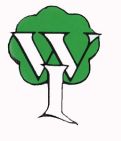

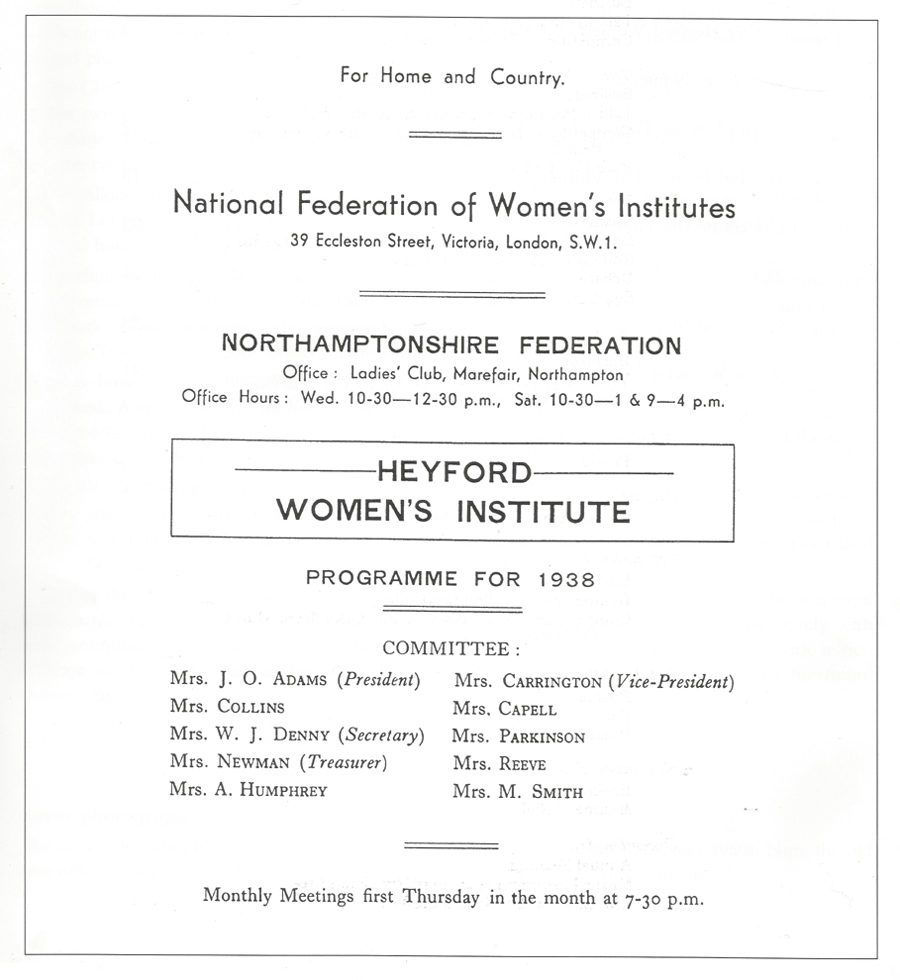
 The early years
The early years
